16 August, 2018 | Match & Coarse | Tips | Articles
40 CommentsImprove your match fishing skills with match ace Ben Fisk’s latest article on why you should use hard pellets on commercial match fisheries..
In this article:
- How to hook hard pellets and when to use them
- Which pellets to use as feed and on the hook when pole fishing
- The tackle required for fishing hard pellets on commercial match fisheries
- How to feed when fishing hard pellets for carp and F1’s
Soft pellets catch a huge amount of fish but come the warmer months match ace Ben Fisk reckons you’re better off being more of a hard man, particularly where your pellet choice is concerned. Between the months of March and October there can be no finer bait for catching numbers of carp than hard pellets. It’s a very positive, selective way of fishing, where softer baits often result in unwanted attention from smaller fish. But get your approach slightly wrong and you’ll spend the day foul-hooking and generally tearing your hair out with hard pellets! This is a bait you need to be careful with, as I’ll go on to explain!
Ben Fisk continues….
Attaching the pellets
Hard pellets can be mounted with either a band or a lasso knot. Unless I’m fishing for a large amount of smaller fish then 99 per cent of the time I choose a band, as it’s so much easier to use. When fishing on the bottom I like to have the pellet touching the hook, because you need to react to bites immediately as fish are not hooking themselves, and it means less foul hookers too. Although, up-in-the-water or on the bomb or feeder it’s a different story and you want a small gap on the hair between the pellet and the hook.
Fishing hard pellets on the bottom I actually prefer to use a spade end hook tied conventionally, so I can hook a micro bait band like you would a maggot. I prefer this to a knotless knot and an eyed hook because a hook tied on a spade has a straight pull upwards when you strike, resulting in much cleaner hook holds in the top lip and not around the side of the mouth, or on the outside. With a knotless knot there’s a much more aggressive hooking angle, which is kinked, which is great for self-hooking methods.
Hooking the band also means the pellet is always tight to the hook as I mentioned previously, plus if you want to change and try an expander or another bait on the same rig you can simply pull the band off. You’d think that a band would keep coming off but it doesn’t and I’ve only found myself putting a new band on a couple of times a session.
Careful feeding
Feeding is probably the single most important part of pellet fishing and it took me a while to get my head around it. It’s incredible how little you can get away with, even in the summer time, and quite often it’s a real case of less is more. Too many pellets in the peg invariably means fish ripping up the bottom, false indications and foul hookers. Sometimes it pays to tap a few pellets in and sit there patiently waiting for a bite, something I do a lot at places such as Bolingey in the White Acres festivals. Even with regular weights of around 150lb-200lb of proper fish here, feeding just five pellets seems the way to go. Attract one fish into the peg at a time and make sure that when it arrives you catch it and don’t foul hook it.
This kind of feeding seems to work on short pole lines all over the place too. Whether or not to pick your catapult up is also a question you should ask yourself. Generally, I only like to do this when fishing long in open water, when the aim is to draw fish in from a bigger area and there’s a chance of a few fish on a shallow rig over the top too, or when I’m on a lot of feeding fish. There are no hard and fast rules however and a lot of the time it’s a case of working it out for yourself as you go, as a recent session at the fantastic Dynamite Hayfield Lakes proved.
I sat on a corner peg at the top of Adams Lake with a long margin banking to fish up to. This isn’t a venue I know that well and I expected it might take a bit of time for the carp to come into the swim here, so I fed about 30 or so pellets by cup and left it to settle while I set the rest of my stuff up. However, when I started fishing a short while later it became evident that fish were already present in the corner as I had a few indications and a bow wave out of the peg, which made me regret putting that bait in! I eventually caught one, then I could start again, feeding for one fish with a Toss pot style cup on my top section.

Accurate baiting is essential. Tap around six or seven pellets from a height to make a noise and attract the fish
Laying the rig up a shelf like this I like to tap the pellets in a few inches down the shelf of the spot I plumbed up. This means fish coming up the shelf from the deeper water find the feed pellets first with the hook pellet above them, meaning less chance of a foul hooker. I like to drop the pellets in from a height because carp are fully cottoned on to the noise of pellets entering the water.
On the day I also experimented with a catapult, flicking in just three pellets at a time to try and attract a few fish in. This seemed to provoke a few liners and didn’t feel right with feed spread too far, so I binned it and just focused on tapping in around seven pellets and waiting for the bite, which seemed to sort the peg out. It was by no means solid, especially with the wind hacking down the other end, but the peg was perfect for the kind of fishing I wanted to demonstrate. By being patient, when a fish came in up the long edge I could catch it.
Pellet choice
There are two main types of coarse pellets. First, what I’d term as the traditional type which is darker and breaks down fairly quickly in water, the Dynamite Low Oil Carp Pellet. And second the much more modern pellet which is a toffee colour and is a lot denser, sinking quickly and taking a long time to break down, the Swim Stim Original Carp Pellet.
I use both these pellets where I have the choice, although many fisheries such as Hayfield have their own compulsory feed pellets, which are perfectly good too. I prefer to feed the Swim Stim type pellets as these are heavy and stay in place on the bottom, rather than getting wafted around a lot. On the hook however, I choose the faster breakdown, more traditional Carp Pellet, because I think fish prefer to eat these.
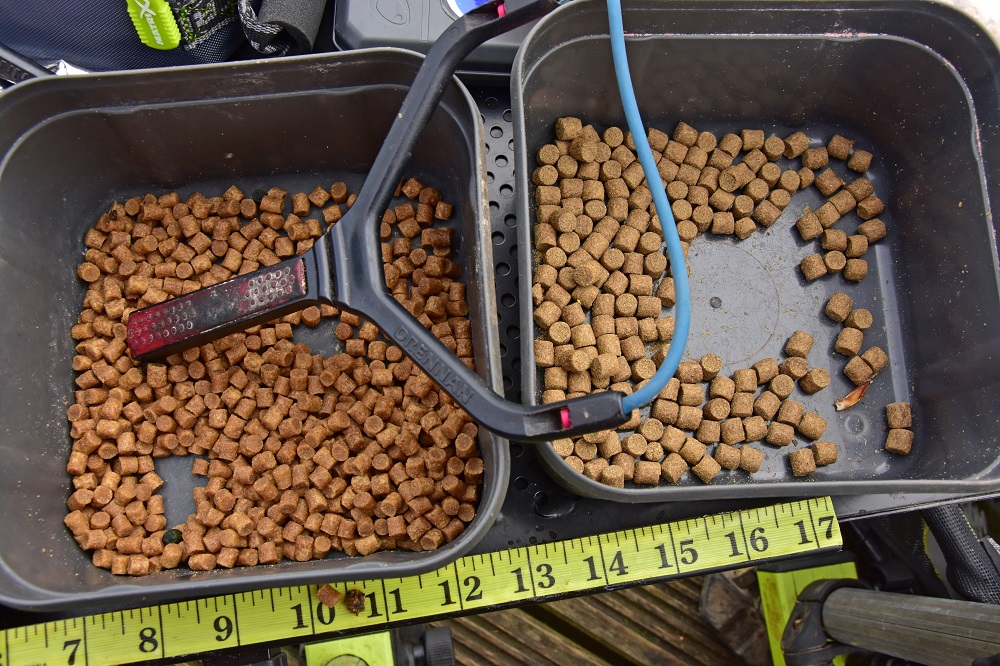
Ben likes to use the low oil XL Carp Pellets (left) and Swim Stim Amino Original pellets (right) at the same time
You must be careful with some fishery own pellets as they float, so always throw a few in the edge to check before you start. If this is the case then I’ll add some Dynamite Complex-T liquid to the pellets, or I’ll also do this if I think I need an edge, for example if it’s a heavily-pressurised venue, which sees a lot of the same fishery pellets fed. Complex-T was a massive hit in the big carp world last year, it’s red in colour and has a unique marmite-type smell and a few of the Dynamite coarse team have been using it to great effect. For some reason it seems to select the proper carp in a peg. If I was fishing for F1’s with hard pellets I’d use the much sweeter SwimStim F1 liquid Pellet Soak.
Float and hook choice
The best float for this game is a thick bristled one which is fished dotted down. I’ll use at least a 2mm hollow tip and in shallow water like this then a Malman Roob or an RW Carp Dink is my choice. Fish can suck in and spit out a pellet very quickly so its important to see that as soon as possible. However, you don’t want to be striking at every brush of a fish on the line, which can happen with a thinner bristle. Also, a dotted down float is much more stable one than one with a full bristle showing!
Both these float patterns have slim bodies and wire stems, which is fine for shallow water. On the long pole in open water however, I prefer something identical but with a rugby ball body, which just sits better in any skim.
My hooks are size 16 or 18 Matrix Carp Baggers. I find the size 18 most effective with 6mm pellets because a smaller hook is much less conspicuous when the whole of it is exposed. I stepped up to the size 16 today however, because of the presence of a few snags in the corner such as a pump in the water. It gave me a bit of extra security when putting pressure on and it also suited the 8mm hookbait I ended up catching on.
Finally, a word on shotting. There’s really no need to use anything other than a slightly strung bulk in water of five-feet deep or less, the deeper it is then the more strung that bulk should be. I use a six-inch hooklength of 0.16mm or 0.18mm Matrix Power Micron, with the first shot a few inches above this. I don’t like to have shot near the hook when fishing in this way, not only so the pellet can waft down naturally but also to reduce the chance of feeding fish hitting the shot and causing liners.
With F1s its different as you need a shorter four-inch hooklength and a shot right on top of it or you won’t see all your bites!
This may all sound a little complicated at first, but it’s really not and if you employ the tips and tricks I’ve spoken about in your angling, your pellet fishing will improve ten-fold. I guarantee it!

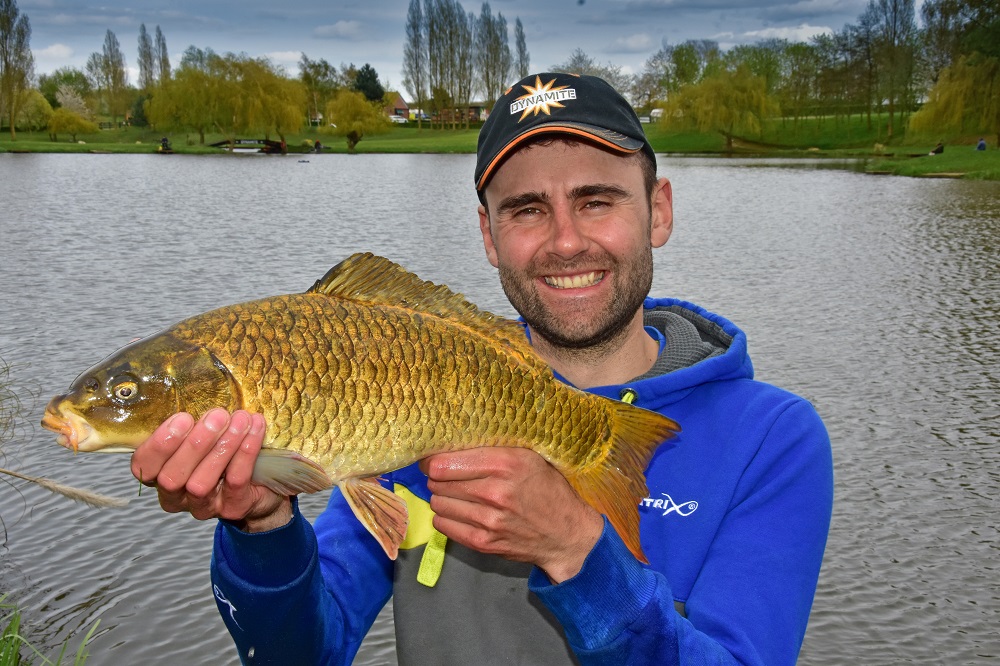
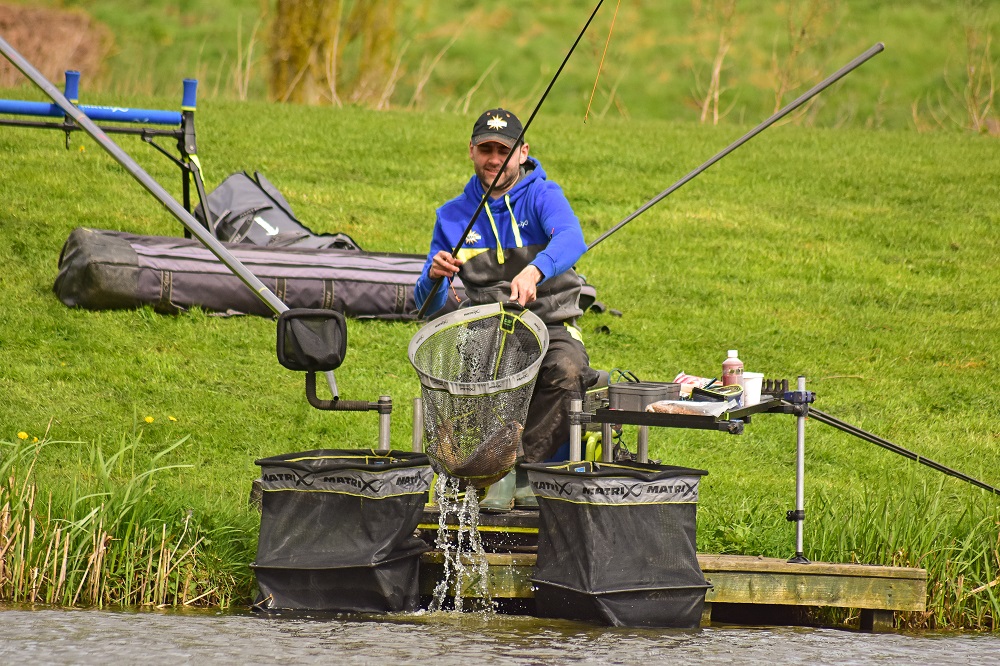
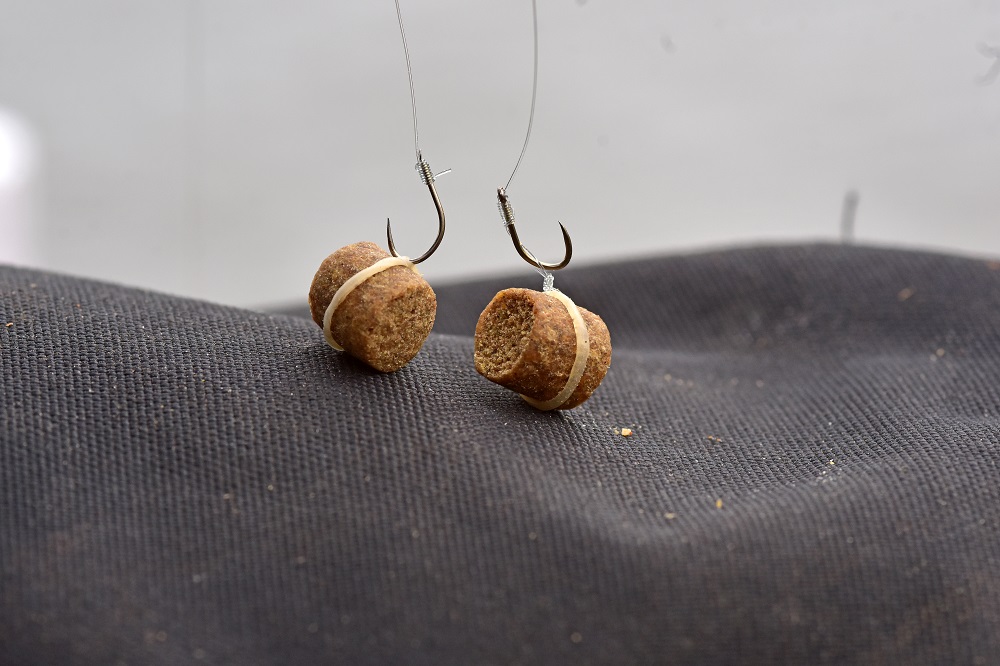

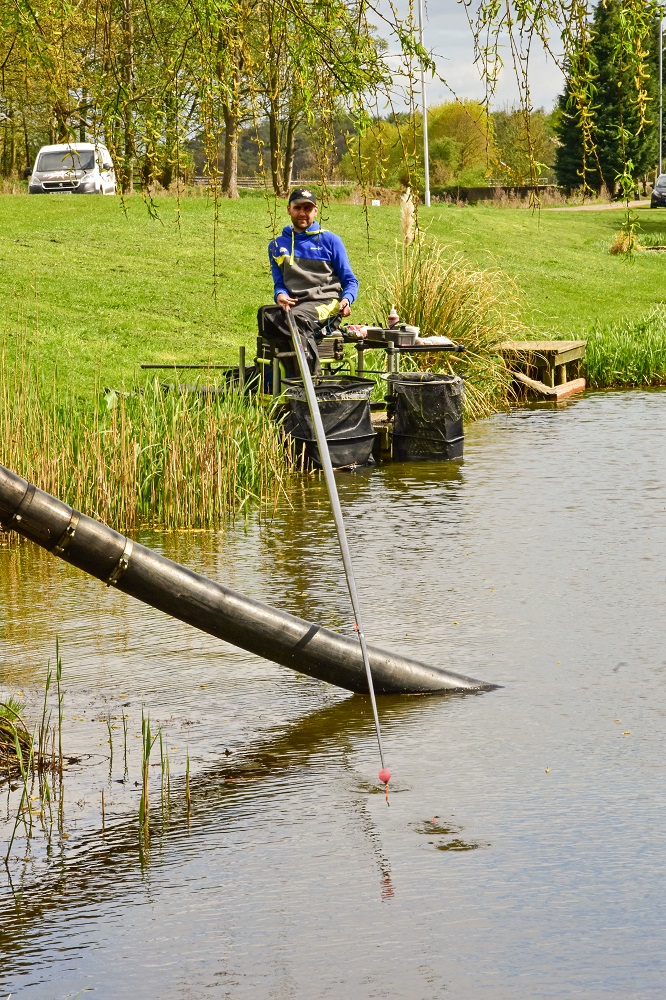

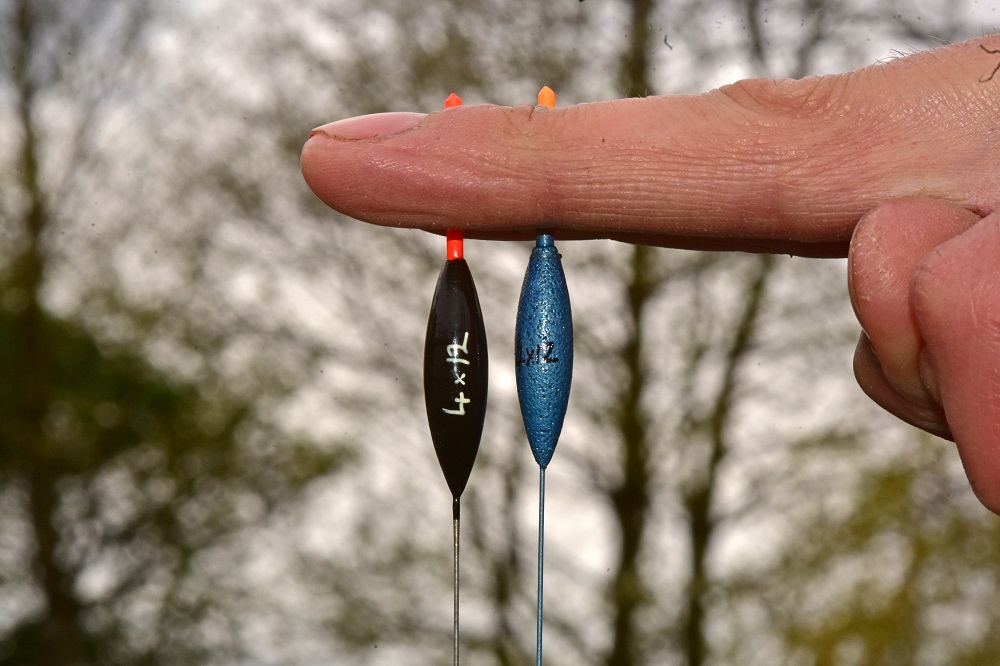
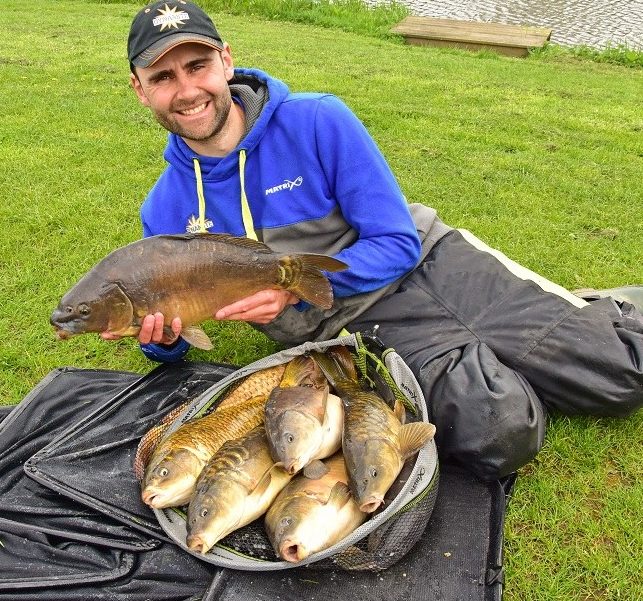











40 Comments
In water how long time wise does it take for Red Robin boilies to breakdown
I went to Hayfield and the tackle shop on site was shut we was relying on it being open after ten mins of panic and after a Forty minute drive I was left with no choice I smashed 8mm source pellets to dust and added Warter used a guru method feeder and guru 14 pellet band rig source pellet on band and dusty source grounbait 1hr 5 carp 1 a nice ghost top place to fish for young and old and just shows u do allways need dynamite just incase
Hia, i seem to struggle hitting bites on hair rigged hard pellets, and when I do i seem to bump them off! I’ve tried just hooking the band but that doesn’t seem to work for me either. I seem to have a lot more success with a pellet of luncheon meat hooked directly or expanders, although with the latter I can be pestered with small fish stealing the hook bait. I would be most grateful for any suggestions, thank you.
Having read this I thought it was very enlightening. I appreciate you spending some
time and energy to put this short article together.
I once again find myself spending a significant amount of time both reading
and commenting. But so what, it was still worthwhile!
I think the admin of this site is actually working hard in favor of his web page, because here every data is quality based data.
What’s up friends, how is everything, and what you desire to say
about this piece of writing, in my view its actually remarkable designed for me.
Gelora188 is the best online slot gambling site in Indonesia that provides the most
trusted online slot services this year. Of the
many slot agents dynamic out there, lonely a few
are officially licensed. Unlike us, our site, which operates under the PAGCOR (Philippine Amusement and Gaming
Corporation) regulation, has tested and proven that our site is an officially licensed site
that provides a broad variety of international gratifying
online gambling games. in imitation of this integrated system, you on your own craving to make one addict ID to be able to enjoy every types of games
available.
Undoubtedly, currently the Gelora188 online slot gambling site is the
most well-liked and sought after site in Indonesia.
The percentage of winning bets upon the Gelora188 online slot site is as
a consequence entirely large, which makes online slot players
totally avid in playing here, and of course in addition to because of the availability of a definitely final selection of games.
Examples of the list of slot agents easy to get to upon the Gelora188 site
are Pragmatic Play, Habanero Slot, Spade Gaming, Playtech, Cq9 Slot and many extra
trusted slot provider agents on the Gelora188 site.
Therefore, if you are looking for the best
online slot site in Indonesia, no dependence to hesitate anymore, make
smile register directly on our Gelora188 site and air big wins and guarantees will no question be paid without waiting long
Situsdominoqq99 is a website that lists the best and
most trusted poker sites in Indonesia from year to year.
The poker agent we allow is the site of the qualified dealer
of pkv games. We understand that members locate it
hard to find bona fide poker QQ poker sites today.
Because many accomplishment sites claiming to be
trusted sites. Here Situsdominoqq99 is here to support Indonesian poker players solve this
problem.
Situsdominoqq99 has summarized most of the problems / constraints of players in finding a trusted
poker site. Or you could say we have provided a list of poker sites for
players. for that reason players just dependence to pick from the poker website that we provide without the hassle.
Alternative contacts of Online Poker Sites
In accessory to providing a list of online poker sites from PKV Games servers
in Indonesia. Situsdominoqq99 website as well as provides various oscillate contacts or exchange sites thus
that members get not experience difficulties in logging in, registering, transacting or playing poker games.
The team from Situsdominoqq99 always updates periodically for all login urls and lists that are upon our site every day.
in view of that players can access the poker
agents / sites that you have recommended through our
site without interruption.
Pandora188 is one of the trusted online gambling bookies.
Pandora188 is as well as the best other for members, because Pandora188 has been officially licensed by PAGCOR.
Pandora188 afterward provides the most complete
game with forward looking features that sync subsequent to every games
using just one account.
The Best encouragement From Pandora188
Pandora188 always provides the best give support to for players.
We offer services such as 24-hour flesh and blood chat that is directly served by customer abet that has been trained
in serving members.
CS Pandora188 is then always upon standby to back up if members experience problems in the login process,
transactions or in the game. Our staff can along with lead
/ find the money for the best promos for members.
Excellence Pandora188 from new websites
Pandora188 provides the most complete game and has in imitation of
through multipart checks, therefore that taking into consideration you
proceed there will be no bugs or errors that can interfere later than your comfort in the
same way as playing on Pandora188.com, Pandora188 is furthermore one of the companies that gets the
best accreditation by Pagcor fittingly you don’t have to
doubt and agitation that your winnings will not be paid for by most sites and unaided come up with the money for cute promises for that
reason that players are curious in registering.
Pandora188 itself has a cyber security team and has prepared a system gone a tall enough security level
so that players pull off not obsession to radio alarm that personal data can leak, and cause extra
losses, Pandora188.com itself never gets complaints and always gets good
news from faithful members who are always feint on Pandora188.
Betberry is a single of the best sites in the online gambling industry
in Indonesia that will provides slots, on line casino, sportsbook, shooting species of fish, money claws, poker, cockfighting
and lottery. We have introduced seamless technology
that provides a fairly easy answer for internet gambling participants.
With just one IDENTIFICATION, you can take pleasure in all the online games from
various providers without having to move money in one provider in order
to another. Betberry alone is certified by simply the Nexus Motor, which means we offer services in order to
players for all those Indonesian players legally.
Pandora188 is one of the trusted online gambling bookies. Pandora188 is as well as the
best choice for members, because Pandora188 has been officially licensed
by PAGCOR. Pandora188 moreover provides the most unchangeable game
taking into account campaigner features that sync with every games using just one
account.
The Best advance From Pandora188
Pandora188 always provides the best utility for players.
We give services such as 24-hour flesh and blood chat that is directly
served by customer utility that has been trained in serving members.
CS Pandora188 is as well as always on standby to assist if members experience problems in the login process,
transactions or in the game. Our staff can also lead / have
the funds for the best promos for members.
Excellence Pandora188 from extra websites
Pandora188 provides the most unquestionable game and has in imitation of
through compound checks, in view of that that bearing in mind you play in there
will be no bugs or errors that can interfere bearing in mind your comfort gone playing
on Pandora188.com, Pandora188 is next one of
the companies that gets the best accreditation by Pagcor appropriately you don’t have to doubt and alarm bell
that your winnings will not be paid for by most sites and
unaccompanied have enough money lovable promises in view of that that players are curious in registering.
Pandora188 itself has a cyber security team and has prepared a
system taking into consideration a tall enough security level therefore that
players pull off not craving to distress signal that personal
data can leak, and cause further losses, Pandora188.com itself never gets
complaints and always gets fine news from faithful members
who are always put on an act upon Pandora188.
Sakura188 recognized Register & Login
For those of you who have often played online gambling, you unquestionably
don’t compulsion to accustom what are the advantages of this game.
Apart from the challenges and the fun they get, those who conduct yourself online gambling can, of course, earn pension just by playing the games they like.
bearing in mind else can you make allowance
from fun things?
To be skilled to enjoy online gambling games,
of course you must first register as a aficionado on a trusted online gambling site.
One of the online gambling sites that has been used by millions of players throughout Indonesia is Sakura188.
Our site is one of the best online gambling game provider
agents in Indonesia. Presenting every types of the best
and most popular online gambling games such as soccer
gambling, enliven casino, online poker, slot gambling and as a result on. By becoming a member upon this site,
you will automatically be closer to finishing in the online gambling industry.
Keep on working, great job!
What’s up to every one, the contents present at this web page are truly amazing
for people experience, well, keep up the nice work fellows.
Useful info. Fortunate me I found your web site by accident,
and I am shocked why this coincidence didn’t happened in advance!
I bookmarked it.
You can definitely see your skills in the article you write.
The arena hopes for more passionate writers like you who are not afraid to mention how they believe.
Always follow your heart.
Thanks for a marvelous posting! I really enjoyed reading it, you
happen to be a great author. I will always bookmark your blog and will often come back at some point.
I want to encourage yourself to continue your great writing,
have a nice afternoon!
This design is spectacular! You definitely know how to
keep a reader entertained. Between your wit and your videos,
I was almost moved to start my own blog (well, almost…HaHa!) Excellent job.
I really loved what you had to say, and more than that, how you presented it.
Too cool!
JAZZ188 The Most well-liked Online Slot Agent in Indonesia 2021
JAZZ188 is the newest and most popular online slot agent in 2021.
This is because JAZZ188 always pays off regardless of the number
of enthusiast wins, even though the value reaches billions of rupiah.
Here the payment process is less than 3 minutes. In becoming the most well-liked online slot agent, JAZZ188 has various
types of online slot games from several famous slot providers.
These providers in accessory to having various and fascinating
online slot games, of course there are things that stand out the most from them, namely
attractive promos and several slots later clear spin buy
features.
Pragmatic Slots
Who is not known in imitation of Pragmatic law or Pragmatic slots.
This one slot provider is often chosen by online slot fans in Indonesia.
most likely you are in addition to a fan of Pragmatic play.
Slots at Pragmatic are famous for their easy gameplay, elegant appearance, and the overwhelming joy of swine plentiful.
substitute engaging situation nearly this Pragmatic Slot
is the promos that are often held, namely supplementary member promos,
deposits, events, well ahead jackpots and many
others. The minimum pragmatic slot bet is 200 Rupiah only.
Playing later small capital often wins a lot in pragmatic slots.
Your safety playing in pragmatic slots is next well maintained.
One of the games that is currently brute played at Pragmatic Slots is delectable Bonanza.
attractive look and features to buy free spins are the strongest fellow feeling for this game.
There is then a game from a pragmatic slot that is no less interesting,
namely edit of Olympus. A cold display can create you
beta here. Jackpots after that appear frequently for this game.
Hello, I do believe your website may be having browser compatibility issues.
Whenever I take a look at your site in Safari, it looks
fine however, when opening in IE, it’s got some overlapping issues.
I just wanted to give you a quick heads up! Other than that,
great website!
Hi dynamitebaits.com administrator, You always provide helpful information.
Hello dynamitebaits.com administrator, Your posts are always thought-provoking and inspiring.
Hey There. I found your blog using msn. This is a really well written article.
I will be sure to bookmark it and return to read more of your useful info.
Thanks for the post. I will certainly comeback.
This is my first time pay a quick visit at here and i am in fact impressed to read all at alone place.
If you are going for finest contents like me, simply go to see this web site
daily since it offers feature contents, thanks
Attractive portion of content. I simply
stumbled upon your weblog and in accession capital to claim that
I get in fact enjoyed account your weblog posts.
Any way I’ll be subscribing on your feeds and even I fulfillment you
get right of entry to consistently fast.
I’m really loving the theme/design of your blog.
Do you ever run into any browser compatibility issues?
A few of my blog audience have complained about my site not
operating correctly in Explorer but looks great in Firefox.
Do you have any solutions to help fix this problem?
Hello my family member! I wish to say that this post
is amazing, great written and come with almost all important infos.
I would like to look extra posts like this .
Wow, amazing blog layout! How long have you been blogging for?
you make blogging look easy. The overall look of your website is excellent, as well as the content!
Hi dynamitebaits.com admin, Your posts are always well-formatted and easy to read.
Wow, this piece of writing is pleasant, my younger sister is analyzing these things, therefore I am going to inform her.
Hello dynamitebaits.com admin, Thanks for the well-organized post!
Hey are using WordPress for your blog platform?
I’m new to the blog world but I’m trying to get started and set up my own.
Do you need any coding knowledge to make your own blog?
Any help would be really appreciated!
It is appropriate time to make a few plans for the long run and it is time
to be happy. I have learn this put up and if I may just I wish to counsel you some interesting issues or tips.
Perhaps you could write subsequent articles relating to this article.
I wish to read more things approximately it!
That is very attention-grabbing, You’re an overly professional blogger.
I have joined your rss feed and look ahead
to seeking extra of your excellent post. Also, I’ve shared your site in my social networks
To the dynamitebaits.com owner, You always provide in-depth analysis and understanding.
Explore and discuss the values that individuals hold dear. How do these values shape their decisions, actions, and overall outlook on life?
All the honest, open sharing in the world may not make much difference if it comes too late
Hi dynamitebaits.com admin, Thanks for the well-structured and well-presented post!
Thanks for sharing. I read many of your blog posts, cool, your blog is very good.